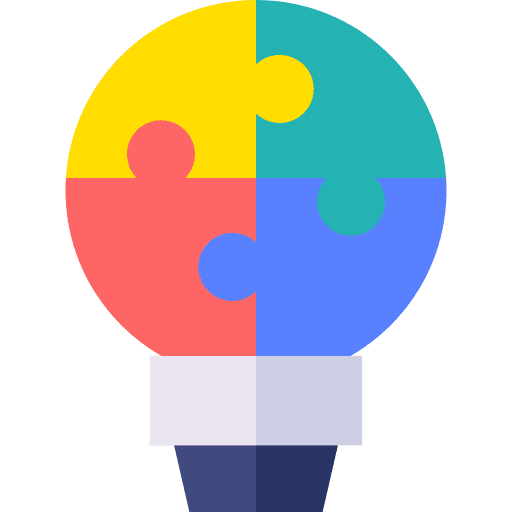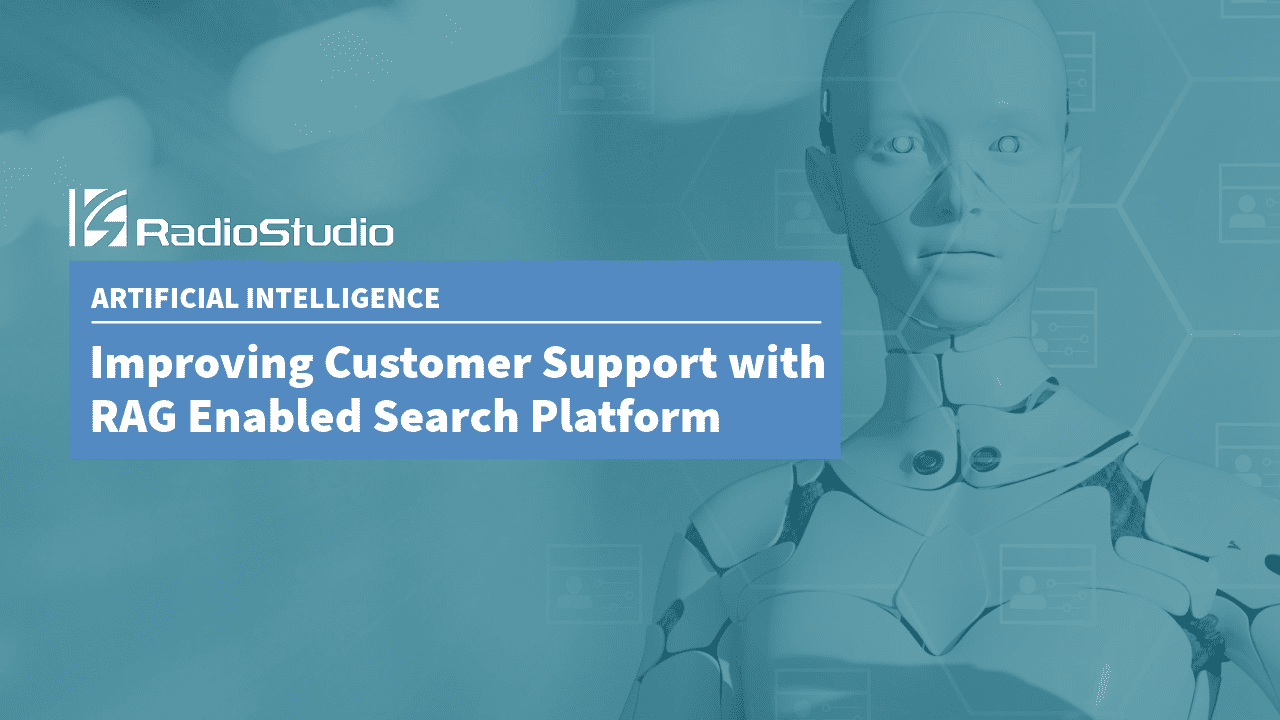Discover the transformative impact of Conversational AI, including its evolution, current trends, and role in improving customer support with RAG (Retrieval Augmented Generation). If you’re thinking about why and how to adopt this technology for customer support, here are some great insights.
This post was originally published in Vectara.
Use Case: Improving Customer Support with RAG

Problem Statement
Traditional conversational AI platforms rely on a dialog engine and language modelling to retrieve information for customer support interactions. This approach is based training and retraining of language models, and is prone to hallucinations, lack of contextual clarity and is not scalable in case of continuously updating enterprise knowledge base.

Realization Approach
A RAG (Retrieval Augmented Generation) based LLM model can be leveraged to build a enterprise customer support chatbot which does not need expensive retraining with continuously updating data.

Solution Space
RAG based ingestion of new and updated data is a few orders of magnitude faster than setting up the training pipeline for LLMs. hence it is more cost effective in terms of the need for compute and GPU processing. Moreover, it also offers better data security since the augmented data is not part of the general training base for the LLMs generated output.
Introduction
Welcome to the world of Conversational AI — a game-changing technology that brings machines closer to understanding and responding like humans. In simple terms, Conversational AI enables seamless communication between people and machines using natural language. In this blog, we’ll explore the basics, Vectara’s role, implementation insights for different roles, and how to overcome common challenges in making Conversational AI work for customer support.
Unpacking Conversational AI
Definition and Explanation of Conversational AI
Conversational AI is a branch of artificial intelligence that enables machines to understand and respond to natural language, allowing for human-like conversations between users and systems. It applies technologies like natural language processing, speech recognition, and machine learning to enable seamless communication between human and machine through spoken or written language.
Importance of Conversational AI in Customer Support
Conversational AI is transforming customer support, ensuring support is available to customers in a consistent, reliable and economical manner can help to address critical support needs.
Benefits include:
- 24/7 availability
- Scalable support operations
- Efficient issue resolution
- Seamless engagement across communication channels
- Anticipatory user experiences
Conversational AI Solutions
Vectara provides a GenAI-powered search platform that powers the intelligence behind the Conversational AI systems businesses are building today. We do this with our best-in-class retrieval model, called Boomerang, ensuring that any conversational agent finds the most relevant information to answer the questions a customer may have.
Vectara can enhance customer engagement and support efficiency and yield a substantial uptick in customer satisfaction and brand loyalty. What sets Vectara apart is that it handles a lot of the technical complexity behind the scenes, which enables a GenAI-powered Conversational experience under one platform without the need for a battalion of data scientists or complex AI infrastructure.
Vectara’s GenAI-powered search platform understands what a customer’s needs are amidst linguistic intricacies, typos, and colloquial nuances, helping to create a personalized and streamlined interaction with a chatbot.
Mark Jancola, Chief Development Officer at Conversica, has highlighted Vectara’s expertise, especially praising its scalability, speed, and game-changing impact on digital assistant capabilities.
Implementation Insights for Product Managers
Steps and considerations for implementing Conversational AI in customer support:
Step 1. Assess Support Needs
- Analyze customer queries
- Identify chatbot capabilities and containment goals
Step 2. Build the Business Case
- Estimate savings and development costs
- Recommend pilot scoping for ROI demonstration
Step 3. Guide Chatbot Development
- Define conversation flows with developers
- Enhance chatbot with curated support content
- Ensure seamless handover for complex queries
Step 4. Measure Performance
- Track containment and accuracy rates
- Gather customer feedback on chatbot interactions
Step 5. Continuously Improve
- Use analytics to enhance chatbot capabilities
- Expand coverage over time
- Integrate human agents for complex conversations
Role of product managers and marketers in this implementation:
Product Managers need to identify use cases where a conversational AI platform’s capabilities can enhance the support experience. They should prioritize retrieval as a key area of the conversational AI system since the best retrieval will yield the best answers. Working hand in hand with engineering teams on the API integration with a service like Vectara, they should ensure to test search relevancy, iterate on optimizations, and promote improved, human-like conversational AI experiences as key product capabilities.
Product marketers can help by showcasing efficiency gains, help manage expectations about the system’s capabilities, and ensure to solicit customer feedback to continue improving the system based on data insights. Product marketers should position conversational AI as a collaborative ally, emphasizing benefits such as 24/7 availability while also setting realistic expectations about current limitations. This will make it easier for organizations to incrementally adopt AI, building trust in solutions over time backed by a strong customer experience strategy led by product marketing.
Measuring the success and ROI of Conversational AI implementation:
Here are a few important key metrics a business needs to analyze for measuring success:
- Cost Reduction
- First Response Time (FRT)
- Average Handling Time (AHT)
- Enhanced Customer Satisfaction (CSAT)
- Net Promoter Score (NPS)
- User Engagement
By looking closely at these important metrics, businesses can see how well the system is performing, make improvements, and, more importantly, evaluate their ROI.
Implementation Insights for Developers and Engineers
Building the Future: A Developer’s Guide to Conversational AI with Vectara
For developers gearing up to integrate Conversational AI, Vectara offers a developer-friendly platform with easy-to-use APIs that allows developers to focus on building their application without the need to specialize in generative AI, RAG, or the specifics of Chat system infrastructure management.
Here are some tips and best practices to consider when building out your strategy:
- Understand the API. Vectara’s API is rich with capabilities allowing developers much flexibility when building their GenAI application. It’s useful to review the API ahead of time and map out the API features you would need to use for your application.
- Data Ingest strategy. Every Conversational AI application is based on some custom data to drive the responses. As a developer, consider the data you need to feed into the application. Is it a fixed dataset, or does it change over time? Often, data needs to be updated – how often do you need to refresh the data? And will you index the data directly via the API or use one of the data ingest solutions compatible with Vectara, like Airbyte?
- User Interface: Whether your conversational AI application is in the form of a chatbot, question-answering app, or takes a different form, consider how you want to design the user interface. Often a good UX results in higher adoption and success of the overall application, so it’s worth investing time in. We can recommend considering the vectara-answer, React-search or Create-UI tools or many other options that are available in the open source community. The key is to think about this up-front and make it awesome!
- Consider maintenance and upgrades. With Vectara the good news is that all the complexity of maintenance, uptime, and upgrades to the core GenAI infrastructure is handled by Vectara. You, as the developer, need to consider how you deal with requests from your users to enhance the user interface or include new types of data from your organization.
- Last but not least – stay in touch with the Vectara community to learn what other developers are doing with Vectara and see what you might want to add to your application. You can keep in touch with the latest on our discussion forums or in our Discord server.
Overcoming Common Challenges
Navigating the Bumps: Strategies for Overcoming Common Conversational AI Challenges
Implementing Conversational AI comes with many hurdles. Consider some common challenges and strategies to overcome them:
Common challenges faced while integrating Conversational AI:
Challenges such as misunderstanding user intent, handling complex queries, and maintaining a conversational flow can arise during implementation. It is paramount to recognize these challenges early and identify proactive resolutions. This is what Vectara’s platform is incredibly good at; understanding the meaning and intent of queries. It is essential to create regular feedback loops between product managers, developers, and support teams to help identify missing data and address issues promptly. This is where hallucinations arise if this is not established.
How to overcome this challenge:
To address challenges effectively, implement feedback mechanisms that allow the system to learn and adapt based on user interactions. They need to regularly update language models to stay aligned with the evolving linguistic landscape if they do not have the proper tools in place that do it for them. Collaboration between cross-functional teams is crucial for holistic problem-solving.
Future of Conversational AI in Customer Support
Beyond the Horizon: The Future of Customer Support with Conversational AI and Vectara
The future of Conversational AI promises hyper-personalization, multilingual support, and integration with technologies like augmented reality. Vectara is prepared for these trends through its commitment to improvement and adaptability. Its scalable platform integrates seamlessly with emerging tech. Trusted by product managers and developers, Vectara’s Generative AI evolves with Conversational AI. Collaboration among stakeholders and platforms like Vectara is key to navigating implementation, addressing obstacles, and delivering exceptional customer experiences.
Conclusion
Vectara can be a game-changer for elevating customer support through Conversational AI. With a knack for handling linguistic intricacies, best-in-class retrieval, and a strong retrieval augmented generation system that helps mitigate hallucinations/incorrect answers, Vectara can help power the brain of your Conversation AI system. The result? Top-notch customer satisfaction, better conversions, and a transformative customer support experience.


